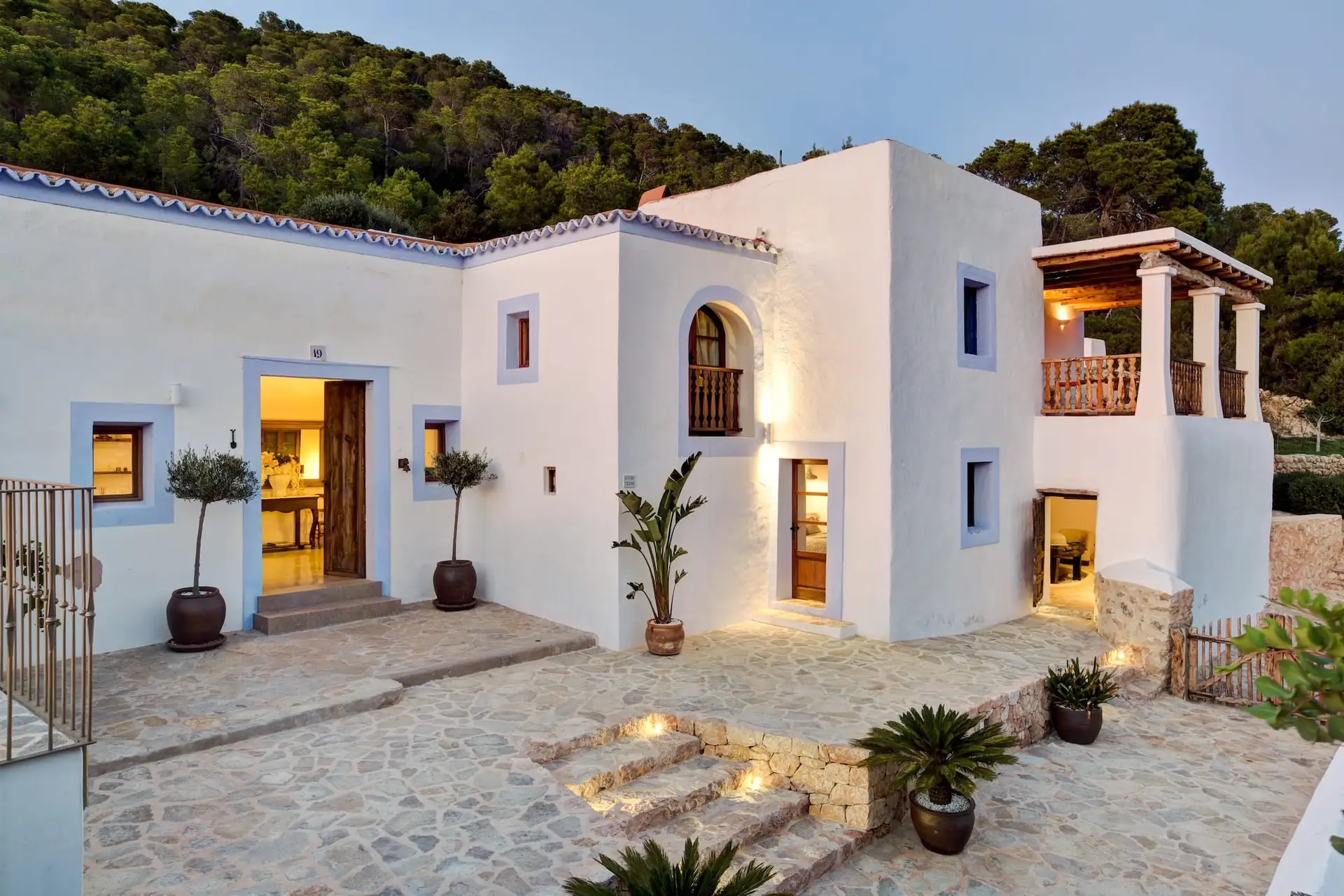Ibiza is an island of contrasts—golden light against deep shadows, rugged stone softened by whitewashed walls. That brilliant white—the color of tradition, of time itself—has shaped the island’s architecture for centuries. The white of Ibiza’s traditional paint is not ordinary paint. It is cal, a lime-wash that breathes with the walls, shifting subtly with the light.
Every spring, families would refresh their homes with cal, layering new coats over old—a ritual of renewal passed down for generations. The tradition of painting homes with cal each year wasn’t just for aesthetics; it was essential. White reflects the heat, helping to keep homes cool in Ibiza’s scorching summers—a natural adaptation long before air conditioning. Ibizans painted their houses white for hundreds of years before modern industrial paint was invented, using a natural material found locally.
Cal was more than just a way to beat the heat. It also acts as a natural disinfectant, preventing mold and bacteria from taking hold in the island’s humid climate while helping walls absorb and release moisture, reducing cracks over time.
At Can Frare, we still use cal. Not because it is easier—it isn’t. Not because it is cheaper—it isn’t. Not because it lasts longer—it doesn’t.
We use cal because it feels right—because it allows this historic building to breathe and evolve. Unlike modern paint, which traps walls beneath a uniform coat, cal seeps into the surface, allowing the building’s character to emerge.

Scattered across the hills of Santa Agnès, hidden beneath the pines, lie the remnants of Ibiza’s lime-burning past—silent now, but once the lifeblood of the island’s whitewashed villages.
Here, the remains of ancient cal ovens—large circular stone kilns—tell the story of a once-thriving craft. Limestone was quarried, stacked inside these kilns, and burned for days, reducing it to a fine, pale powder. Once mixed with water, it transformed into the lime-wash that made Ibiza’s houses glow white.
Today, these old cal pits lie almost forgotten—half-buried in pine forests, their fires long cold, their stone circles fading into the earth. But walk the coastal trails near Santa Agnès, and you’ll still find them, standing as quiet reminders of a craft that once shaped every whitewashed home on the island.
These old paths, created by the kiln workers, are still worth the walk. Not just for history, but for their sheer beauty—dusty trails winding through forests, often close to the shimmering sea.
Can Frare has its own cal furnace, hidden at the bottom of the finca, in the forest. It’s still there—a sunken relic of the past, its rough stone walls telling of the immense effort once required to keep Ibiza white.
Standing at its edge, you realise the scale of the work involved. The kiln is around four meters across and four meters deep, hand-dug into the earth. Operating it was a communal effort, a massive undertaking requiring days of labor just to prepare a single batch of cal. The pit would be carefully stacked with limestone, layered with wood, and then set ablaze, burning continuously for several days.
The furnace at Can Frare didn’t just serve one house—it served a community. Much like the flour mill, still standing today, once ground wheat for neighbouring families, or how the olive press at Sa Roca turned the valley’s olives into oil, this cal furnace played its own role in Ibiza’s historic economy of exchange.
Life in rural Ibiza was deeply interconnected, with neighbours relying on one another for cooperation.
Using cal at Can Frare is about more than tradition. It’s about texture, breathability, and the way it makes the house feel alive.
Unlike modern paints that seal a surface, cal becomes part of the wall itself—absorbing light, shifting with the day, alive. In the morning, the walls glow with a cool, fresh brilliance. By afternoon, as the Ibizan sun climbs high, they reflect the light with a dazzling intensity, keeping the interiors naturally cooler. As evening falls, the walls seem to hold onto the last warmth of the day.
Cal makes the house soft to the touch, imperfect in the best way. No two walls are the same, no two brushstrokes identical. Modern white paint would feel cold, harsh, and uniform in contrast to the warmth of cal.
And perhaps that’s why this great old house has always felt so alive—and always romantic.
© Copyright 2025 Can Frare Ibiza